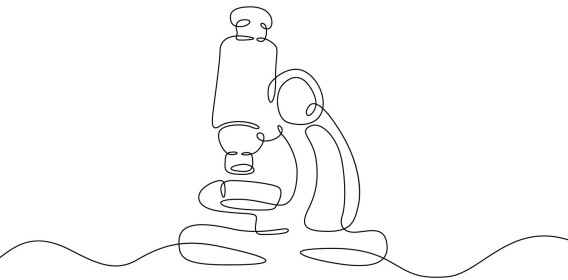
Githa got TBE from a tick bite:
“When the virus reached my brain, the headache became so intense that I thought my head was going to explode”
What Githa initially assumed was just the flu turned out to be the result of a tick bite. The virus affected her brain, leaving her completely incapacitated for an entire year. Norwegian researchers have since gained more insight into this disease.
Today, tick-borne encephalitis (TBE) is present in ticks along almost the entire Norwegian coastline, from Flekkefjord in the west to the Swedish border in the east.
Particularly in coastal areas around Arendal, Porsgrunn, and Larvik, many cases have been reported.
In recent years, however, new areas have seen cases of the illness.
The warm and humid summer in many parts of Norway could lead to an increase in tick populations. Researchers now fear that the TBE virus will spread to even more regions.
The virus has already been detected in ticks as far north as the Helgeland coast, although no cases of illness have been reported there yet.
Never even saw the tick
Githa Kristensen lives in Porsgrunn, an area marked in dark red on the TBE map from the Norwegian Institute of Public Health, indicating 23 to 58 cases of TBE per year.
When she contracted TBE in 2018, the virus was not as widespread. She had never heard of the disease and wasn’t even aware she had been bitten by a tick.
“I didn't see the tick and didn’t notice anything,” she says.
Exhausted after a regatta
However, a spinal fluid test at the hospital quickly confirmed that the TBE virus was the cause of her severe illness one Thursday in October.
The day before, she had participated in a regatta under extreme wind conditions.
“I was so exhausted and initially thought it was just because I had pushed myself so hard during the race. But then I just kept getting worse and worse,” she says.
A dramatic progression
What first seemed like a severe flu escalated dramatically over the following week.
“I couldn't walk by the time I was admitted to the hospital,” she says.
TBE affects the central nervous system, targeting the brain and the meninges.
“When the virus reached my brain, the headache became so intense that I thought my head was going to explode,” says Kristensen.
Had to go to a nursing home

After two weeks in the hospital, she was sent home. She still couldn't walk and required home care for a while. Eventually, she was placed in a nursing home for rehabilitation.
“At 54 years old, I found myself living with people much older than me. Despite this, I felt that everyone there was physically more capable than I was,” she says.
Following her stay, she was on full sick leave for four months. Gradually, she started working again, and after a year, she was back to her full-time job in the travel industry.
Githa Kristensen recognises how fortunate she has been.
First Norwegian study on TBE
Her infectious disease specialist, Hilde Skudal, at Telemark Hospital Trust, confirms this.
Githa Kristensen is part of her research project.
In May, the first scientific article on Norwegian TBE patients was published, a collaboration between Telemark Hospital Trust, Vestfold Hospital Trust, and Hospital of Southern Norway, including the Norwegian National Advisory Unit on Tick-borne Diseases.
What Kristensen describes to sciencenorway.no is something Skudal is familiar with through her research.
Severe skin pain
TBE patients typically fall ill about a week after the tick bite. The patients in the study reported feeling extremely unwell, with severe headaches, nausea, vomiting, fever, and fatigue.
Around 10 per cent of the patients experienced severe pain in their skin, something Kristensen also experienced.
This symptom had not been widely recognised in previous studies, and several patients sought medical attention and were given pain relief without TBE being considered as the cause, according to Skudal.

Discovered something new
Previous studies on TBE patients have often shown a two-phase pattern in the illness.
“In the first phase, many patients experience what feels like a ‘summer flu’ with symptoms like fever, headache, and fatigue. But after a brief recovery, encephalitis can develop,” says Skudal.
However, in the Norwegian study, half of the patients did not experience this initial phase. Instead, the virus directly targeted the central nervous system.
“This is particularly interesting because it’s something we haven’t focused on much before,” she says.
European studies indicate that these patients tend to be the most severely affected. They are more likely to need intensive care and suffer from long-term complications, she explains.
“We’re now looking into whether this pattern holds true for Norwegian patients as well,” she says.
How are they doing now?
Researchers are currently working on a new study to follow up on the 150 patients from the hospitals who participated in the initial study.
Skudal reveals that sickness absence remains high during the first year after hospitalisation.
“Over 50 per cent of the patients experience long-term issues, including fatigue and memory problems. Some have such severe difficulties that they are unable to return to their normal lives,” she says.
“Life isn’t quite the same”
Githa Kristensen has fully returned to work, but she admits that her life is not quite the same as it was.
“I still experience a lot of dizziness and my balance has significantly worsened since the virus infection. I also get headaches much more frequently than before,” she says.
Kristensen feels that these issues have not diminished over the years.
“My memory isn’t what it used to be either, but that could be due to other factors besides TBE,” the 60-year-old says with a smile.
Some were more severely affected
An inflammation of the central nervous system affects functions critical to our motor skills. This can lead to balance issues and tremors, among other things.
Additionally, the virus affects the areas responsible for cognitive functions like learning, memory, sleep, and emotions, Skudal explains.
She and her colleagues discovered that patients with underlying conditions are at a higher risk of severe illness. Most of these conditions included well-controlled high blood pressure and allergies, followed by heart disease.
“If you have these conditions, it’s especially important to take precautions against this disease,” says Skudal.
Age does not determine severity
The Norwegian study found that age does not influence the severity of TBE in its acute phase.
This finding contrasts with other international TBE studies, which have generally shown that older patients are more severely affected than younger ones.
Skudal is not sure why the Norwegian patients differ in this regard.
“Perhaps the older individuals in our study are healthier, with immune systems that are better able to respond appropriately?” she asks.
Children can also be severely affected
No children participated in this study.
“It seems that fewer children fall ill, based on the number of hospital admissions. This has led to the belief that children experience a milder form of the illness,” she says.
However, when children do contract TBE, European studies have shown an increased risk of cognitive impairments, such as difficulties with learning and memory, Skudal notes.
“But in most cases, children recover well over time,” she says.
“They should receive the vaccine for free”
Githa Kristensen explains that people she knows were alarmed by how ill she became. Several of those who saw her at the time have now been vaccinated.
“Unfortunately, I think the cost is a barrier for many, leading some to skip the vaccine for financial reasons. That's why I believe that everyone living in high-risk areas should have access to the vaccine for free,” she says.
Researcher Hilde Skudal agrees with her.
None of the 130 patients in the Norwegian study were fully vaccinated, she notes.
“We know the TBE vaccine is highly effective. European studies show that only a small percentage of fully vaccinated individuals contract the disease. So, getting vaccinated is a good preventative measure,” she says.
Around 470 USD per family
For a family of two adults and two children to receive three doses from their GP, it costs around NOK 5,000 (470 USD). It’s even more expensive at the pharmacy.
“As a result, it’s likely that many do not prioritise this vaccine due to financial concerns,” Skudal believes.
She suggests that health authorities should consider offering the vaccine for free to people living in areas where TBE is common.
Anticipating new risk areas
Research across several European countries has suggested a possible link between climate change and the increasing incidence of TBE.
“TBE is one of several diseases expected to be influenced by ongoing climate and environmental changes, although there is naturally some uncertainty around this,” senior researcher Solveig Jore at the Norwegian Institute of Public Health says.
The pattern of human TBE cases shows a characteristic coastal distribution that has remained relatively stable, but with some geographic shifts in recent years.
“It’s difficult to know whether this represents a change in distribution or whether the increase in reported cases is due to more testing and increased awareness of the disease among clinicians and the public,” says Jore.
Follows WHO’s advice
Currently, there is no ongoing effort to make the vaccine free.
“The Norwegian Institute of Public Health follows WHO's recommendation to target TBE vaccination to those most at risk, rather than offering it broadly through a vaccination programme,” says Jore.
The recommendation applies to children and adults who are frequently bitten by ticks along the coast in areas where human cases of tick-borne encephalitis have been reported. The risk of infection is highest in these areas and in neighbouring geographic regions:
- Southern Norway and the west coast of the Oslofjord, from Flekkefjord to the former Hurum municipality
- The east coast of the Oslofjord, from Vestby to the Swedish border.
———
Translated by Alette Bjordal Gjellesvik
Read the Norwegian version of this article on forskning.no
Reference:
Skudal et al. Clinical characteristics and factors affecting disease severity in hospitalized tick-borne encephalitis patients in Norway from 2018 to 2022, European Journal of Clinical Microbiology & Infectious Diseases, 2024. DOI: 10.1007/s10096-024-04855-2






































